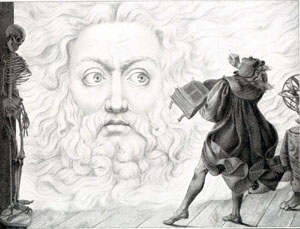|
The
following books are available for purchase at Amherst Books
(8 Main Street) and on reserve at the Circulation Desk in
the Library:
required:
•
Umberto Eco, The Name of the Rose (San Diego:
Harcourt Brace Harvest in Translation, 1994)
• David Finkelstein and Alistair McCleery, eds.,
The Book History Reader (London and NY: Routledge,
2002)
• Carlo Ginzburg,The
Cheese and the Worms: The Cosmos of a Renaissance Miller,
translated by John and Ann Tedeschi (Baltimore: Johns Hopkins,
1992)
• Alberto Manguel,
A History of Reading (NY: Penguin, 1997)
• Vladimir Nabokov,
Lolita (NY: Vintage International, 1998)
• Azar Nafisi,
Reading Lolita in Tehran: A Memoir in Books
(NY: Random House, 2003)
• Arturo Pérez-Reverte,
The Club Dumas (NY: Vintage Books, 1998)
• Neal Stephenson,
The Diamond Age Or, A Young Lady's Illustrated Primer
(NY: Bantam Spectra, 2000)
recommended:
*
Jerome Rothenberg and Steven Clay, eds., A Book of the
Book: Some Works & Projections About the Book & Writing
(NY: Granary Books, 2000)
note:
This book is temporarily out of print and stock, but the store
has managed to acquire a handful of copies. We encourage advanced
students and those particularly interested in the arts to
purchase it.
All
other assigned readings are accessible online through the
course web site.
|
